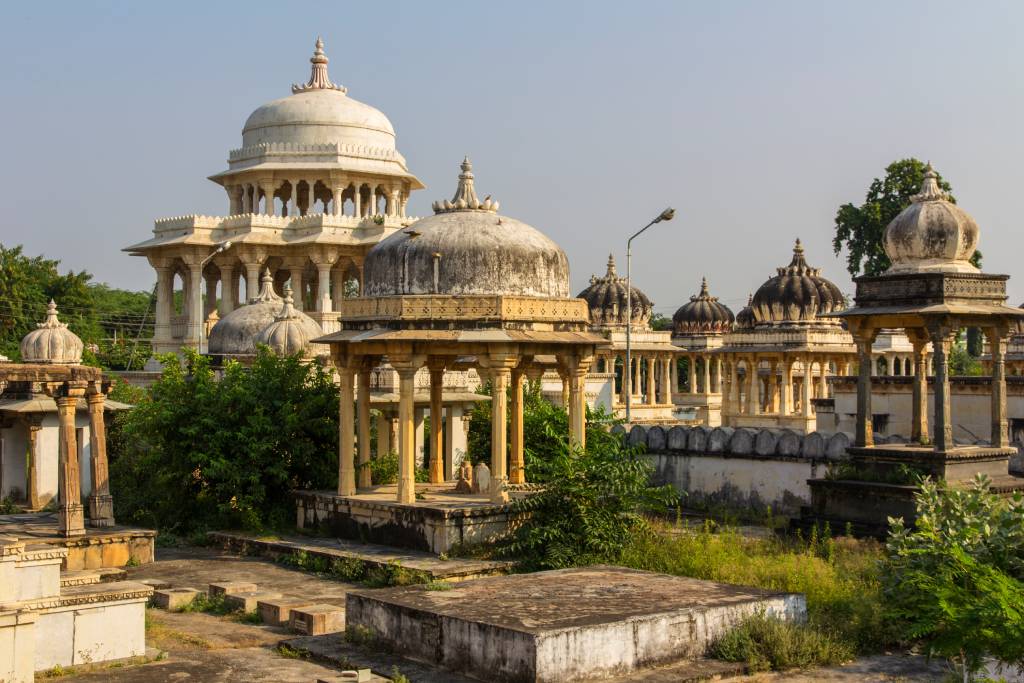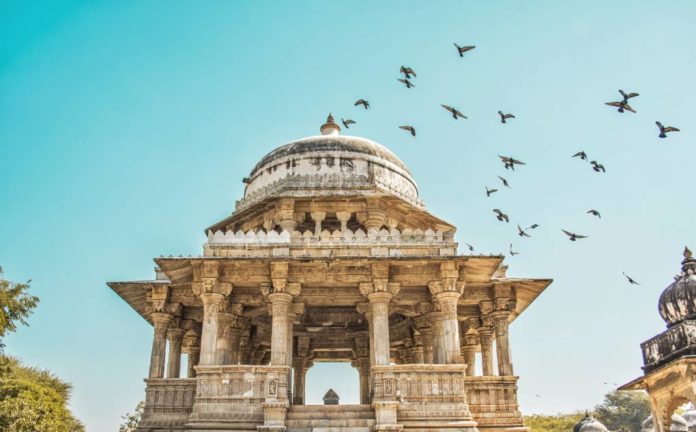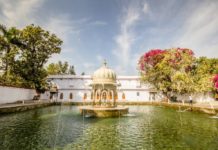Ahar, which is now an integral part of Udaipur, is a lesser-known tourist spot. The place has historical as well as cultural importance. It was a settlement of the Chalcolithic period which dates back to 1500 BC. The site is near the Ahar River (Ayad River).
What makes Ahar unique are the Ahar Museum which is rich in historical artefacts, and the cenotaphs of rules of Mewad. The museum preserves the excavated items belonging to the 10th century. Besides that, the museum even contains antiques from Dhulkot site, which is known as a 4000 years old township.
One must visit the cenotaphs as it is a mark of bravery and courage of Mewad rulers. Tourists often visit this place to pay homage to the rulers of Mewad dynasty. Apart from that, the architecture of these memorial monuments resembles the 15th-century temples.

History and Origin of Ahar
- Ahar was a town located on the northern side of the Ahar River- which passes by the present Udaipur City.
- There was the identification of two different cultures in the archaeological excavation performed in a period between the late 1950s and early 1960s. The two were defined as per the time when the settlement took place:
- Ahar Period I- 2580 BC to 1500 BC
- Ahar Period II- 1000 BC onwards
- After that, Ahar gained political importance during the reign of Guhil rulers of Mewad. Ahar was the capital of their kingdom from 948 AD to 1116 AD.
Significance of Ahar Cenotaphs
- Ahar Cenotaphs are not related to the Chalcolithic period or Guhil rulers. However, it has historical importance as they are the symbolic representation of patriotism and bravery of Mewad kings, warriors, and people of high importance.
- There are 372 cenotaphs at Ahar that honour various people. Out of all the cenotaphs, 19 were erected to pay tribute to Mewad kings who were cremated here.
- It is believed that these Cenotaphs were built over the last four centuries. Though they look alike, they are different in sizes and have various carvings.
- These cenotaphs were becoming ruins and losing the importance they deserved. In the late 1990s, the cenotaphs were reinstalled after the healthy initiative taken by Arvind Singh Mewad who is a member of the royal family of Udaipur.
- After the initiative, the construction of the cenotaph for the Maharana Bhagwat Singh’s cremation was done in the year 2004. It is the last cenotaph built till now.
- Maharana Sangram Singh’s cenotaph, which was built in 1734, is considered the most amazing out of all cenotaphs due to its architecture. There are 56 pillars in the porch, and eight pillars supporting the central octagonal dome. Here, the ruler was buried with his 21 wives.
- Regarding architecture and carvings of these cenotaphs, the image of Lord Vishnu, the ruler, and his wives was carved in the inner side of the dome. This makes the architecture similar to that of a Hindu god’s temple.
- One of the most splendid cenotaphs is of Maharana Amar Singh due to the detailed carving.

Ahar Museum and Its Artifacts
- Ahar Museum houses a lot of unusual artefacts belonging to the 10th. The museum displays coins, toys made of terracotta, animals’ figures, stones weights, pots, and many more items that were used at that time.
- Two of the notable artefacts are the image of God Surya and the statue of Lord Buddha.
- There are a few artefacts that belong to the Chalcolithic period, and thus, they are highly precious.
Entry Fees
- There is no entry fee for the Ahar Cenotaphs.
- For the Ahar Museum, you have to give a minimal entry fee of INR 3.
Timing
- Ahar Cenotaphs remains open from 6 am to 6 pm.
- Ahar Museum remains open from 10:30 am to 4:30 pm. The museum remains closed on Friday and National Holidays.
Best Time to Visit
- The time of the year when you visit Udaipur can significantly influence your experience. It is recommended to visit the city after the rains in September and October. At that time, temperature and weather conditions are favourable.
- For the same reason, you can visit the Museum and Cenotaphs in March as well.
How to Reach
- Udaipur is well connected to the other cities of Rajasthan as well as the major cities of India.
- You can get direct flights from Delhi, Mumbai, and Chennai to reach Udaipur.
- Buses from Mumbai, Delhi, and Jaipur are also available. However, it won’t be a good option as roadways would consume a lot of time.
- The Ahar Museum and Cenotaphs are 23 km away from the Airport. Therefore, it would be an excellent option to take a cab to reach here from the Airport.
- From the bus station, you can choose to visit the place by rickshaws as it just 5 km away from there.










